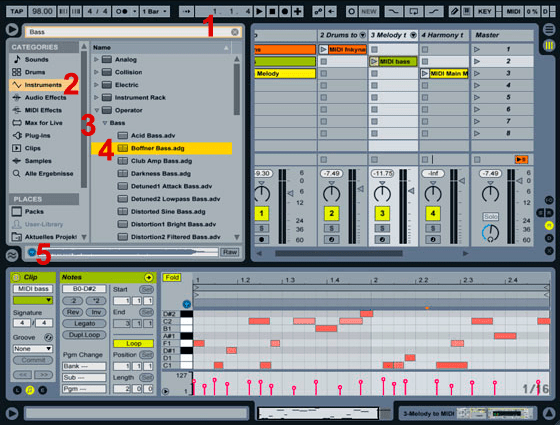

Keep playing back to ascertain that the effects are being applied nicely to the file and you are getting excellent results. Do this by hovering the mouse over this figure and the mouse pointer will turn into a double-sided arrow.

You can refine the audio by dropping the end of the frequency range which in my image is 17000 Hz. Note that the described process is an attenuation process, to get perfect vocals you have to do additional adjustments. If you play the audio you will notice, you will notice that some parts of the instrumental will have been affected. This means that any sounds below 115 Hz and those beyond 17000 Hz are removed. A custom frequency range will start at 115 Hz and end at 17000 Hz. There are four predefined ranges but since we are going to be doing additional adjustments pick custom. The next setting to look at is the Frequency Range is highlighted as 3. What this does is you get to attenuate and minimize the vocals which are at the center. The -48dB is the amount of attenuation applied to the side channels.įollow this up by ensuring that the Extract entry is set as Center. From my image, the center channel level is at zero and the side channel level is at -48dB. The only thing that you are on the lookout for is where the center channel is set and where the side channels levels settings are also set. Therefore, follow up with these settings highlighted in the image below.įirst, check on the right side of the dialogue box. This is a result of how the song was mixed. But just picking this preset does not get an excellent sounding acapella.Īt times it will only attenuate the level of the instrumental. From this list, click on Acapella.Īcapella settings are supposed to isolate the vocals removing the instrumental. Click on that entry and a list of options will appear. In this box, there is a preset menu set to Default whenever you open this dialogue box. This will open the Central Channel Extractor dialogue box. The list that opens up has a Stereo Imagery option just like the process in the effects rack. Īlternatively, you can access this setting in the Effects option in the menu tab. This will open a new list and click on Center Channel Extractor from this list. From this list, hover your mouse over Stereo Imagery. Clicking on the white arrow will open a dropdown list. After the file has been imported, head over to the effects rack.Īctivate the first effect by clicking the arrow on the right and picking an effect. Launch Adobe Audition and import the audio file. Before that here is the process of isolating vocals in Adobe Audition. This is further broken down in the conclusion part of this article. This has a huge effect on how successful your process will end up.


Mixing and mastering songs come with different approaches. In this process, we end up with just the instrumentals. The inverse of this process is attenuating or removal of vocals from an audio file. This article focuses on the process of isolation of vocals in which we end up with the acapella of the vocalist. It is a resourceful effect in making changes to the instrumental parts or the vocal parts of a song. You can amplify vocals, boost center channel bass, drop vocals by some dBs and not entirely remove them. This effect has numerous effects that can be used. This article looks specifically looks at an effect known as the Center Channel Extractor in Adobe Audition. Such processes are useful to DJs who are looking to make remixes of songs. The existence of these two separately are often privy to a few people sometimes it can be limited to the producer who worked on the song. An audio music file will have a vocal part and the instrumentation part. This article will look at the removal of vocals from a piece of music.


 0 kommentar(er)
0 kommentar(er)
